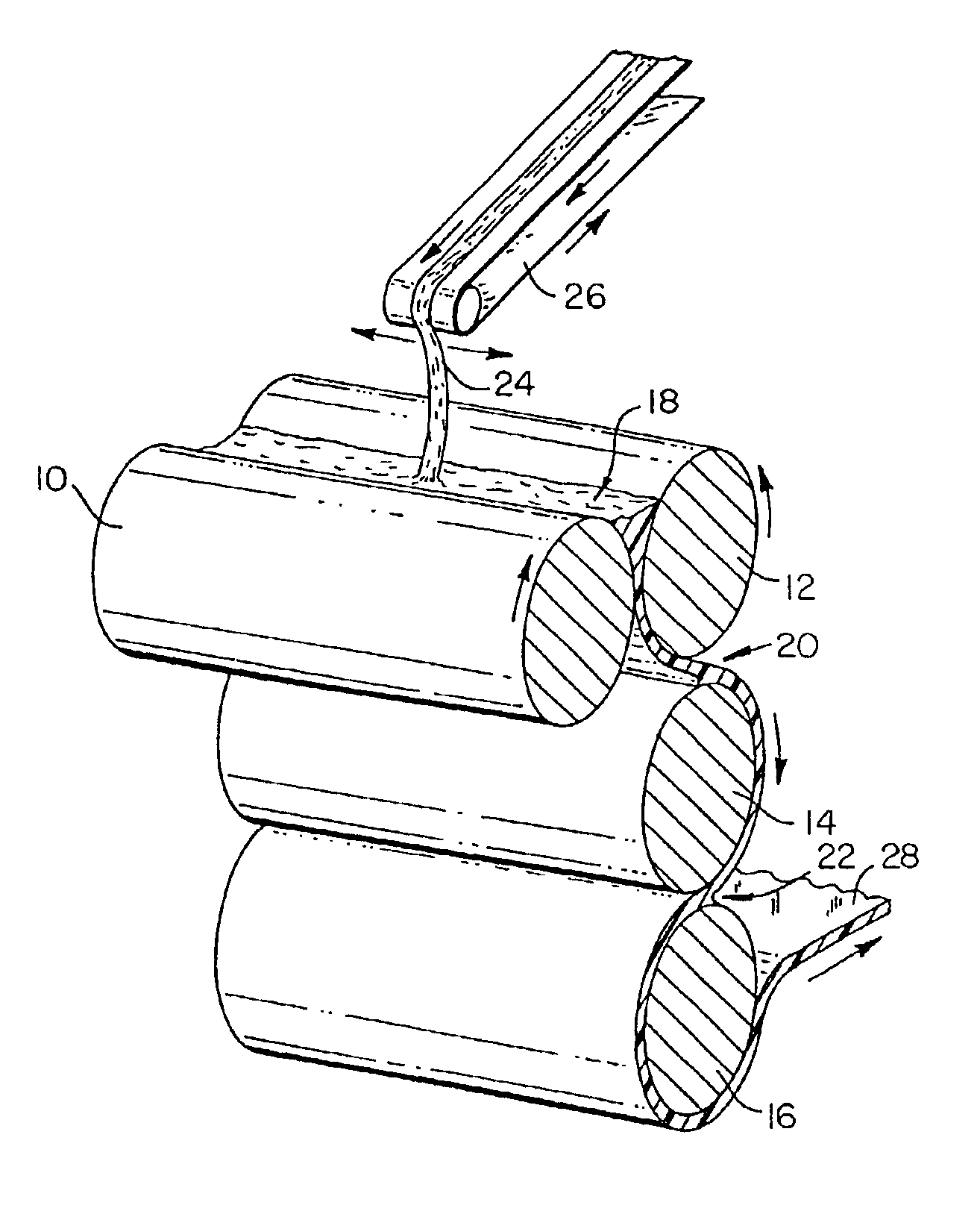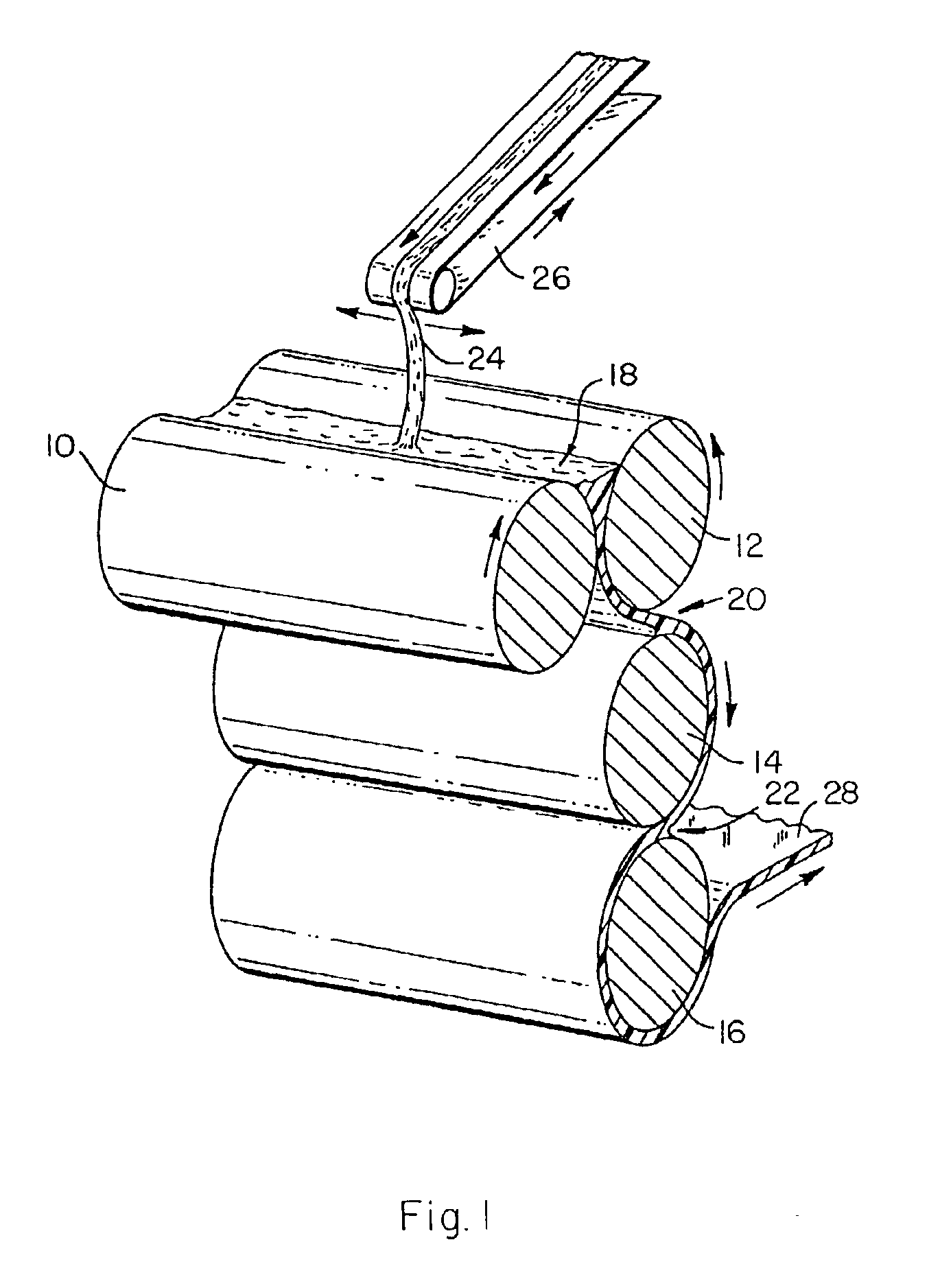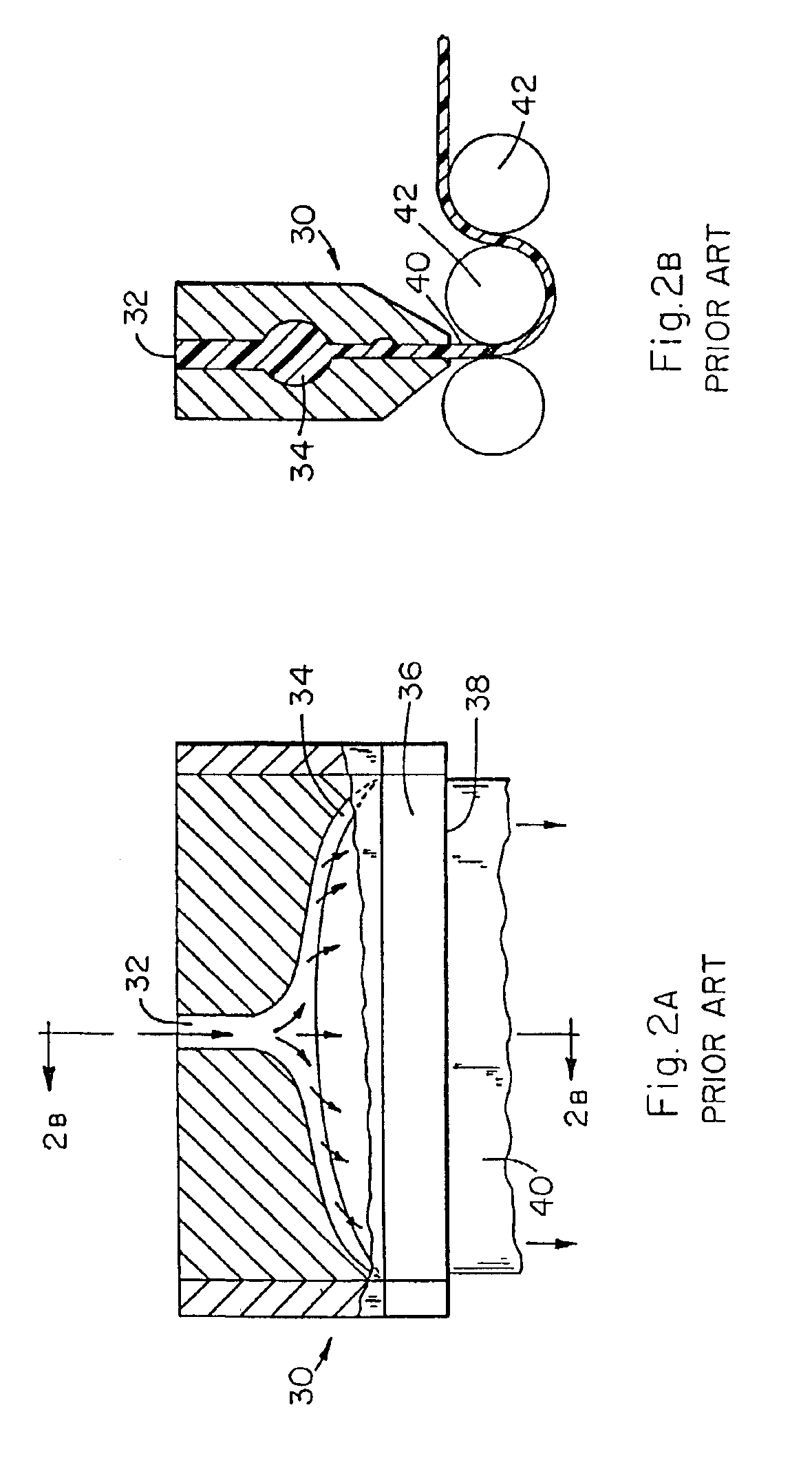Polyester resin compositions for calendering
- Summary
- Abstract
- Description
- Claims
- Application Information
AI Technical Summary
Benefits of technology
Problems solved by technology
Method used
Image
Examples
examples 1 to 7
Polyester compositions A and B are predried at 65° C. for 12 hours in a dehumidified dryer and compounded with various additives as listed in Table 1, using a 30 mm Werner Pfleiderer 40:1 L / D co-rotating twin screw compounding extruder.
TABLE 1Material IdEx. 1Ex. 2Ex. 3Ex. 4Ex. 5Ex. 6Ex. 7Polyester A1100.0%96.0% —97.0% 96.5% 99.0% 99.0% Polyester B2——96.0%———PARALOID K1753—2.5%2.5%2.5%2.5%——IRGANOX—0.5%0.5%0.5%—0.5%0.5%1010 / DSTDP4MYVEROL 18065—1.0%1.0%—1.0%——Zn Stearate6—————0.5%—KENAMIDE S7——————0.5%1Polyester A: Polyester containing an acid component of 100 mole % terephthalic acid and a glycol component of 31 mole % 1,4-cyclohexanedimethanol and 69 mole % ethylene glycol 2Polyester B: Polyester containing an acid component of 100 mole % terephthalic acid and a glycol component of 3.5 mole % 1,4-cyclohexanedimethanol and 96.5 mole % ethylene glycol. 3PARALOID K175 is an acrylic-processing additive available from Rohm & Haas. 4This is a mixture of IRGANOX 1010, which is a phenolic s...
examples 1-7
demonstrated the feasibility of calendering polyesters. Polyester A was an amorphous polyester having a crystallization half time of infinity. Polyester B has a crystallization half time of less than 5 minutes and was not readily calendered.
example 8
Using the compounding procedure of Ex 1, a polyester containing an acid component of 100 mole % terephthalic acid and a glycol component of 12 mole % 1,4-cyclohexanedimethanol and 88 mole % ethylene glycol (I.V. of 0.74) was compounded with 1.0 weight % zinc stearate and 1.0 weight % MYVEROL 1806. The material was heated to its molten state of 260° C. and then transferred to a hot roll mill calender. The copolyester was calendered through compressive nips on the calender rolls to a final sheet thickness of 0.65 mm. This example demonstrated the feasibility of calendering a polyester having a crystallization half time of 12 minutes.
PUM
| Property | Measurement | Unit |
|---|---|---|
| Temperature | aaaaa | aaaaa |
| Temperature | aaaaa | aaaaa |
| Temperature | aaaaa | aaaaa |
Abstract
Description
Claims
Application Information
 Login to View More
Login to View More - R&D
- Intellectual Property
- Life Sciences
- Materials
- Tech Scout
- Unparalleled Data Quality
- Higher Quality Content
- 60% Fewer Hallucinations
Browse by: Latest US Patents, China's latest patents, Technical Efficacy Thesaurus, Application Domain, Technology Topic, Popular Technical Reports.
© 2025 PatSnap. All rights reserved.Legal|Privacy policy|Modern Slavery Act Transparency Statement|Sitemap|About US| Contact US: help@patsnap.com



